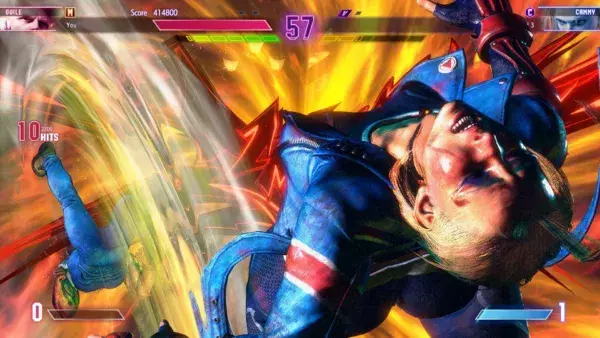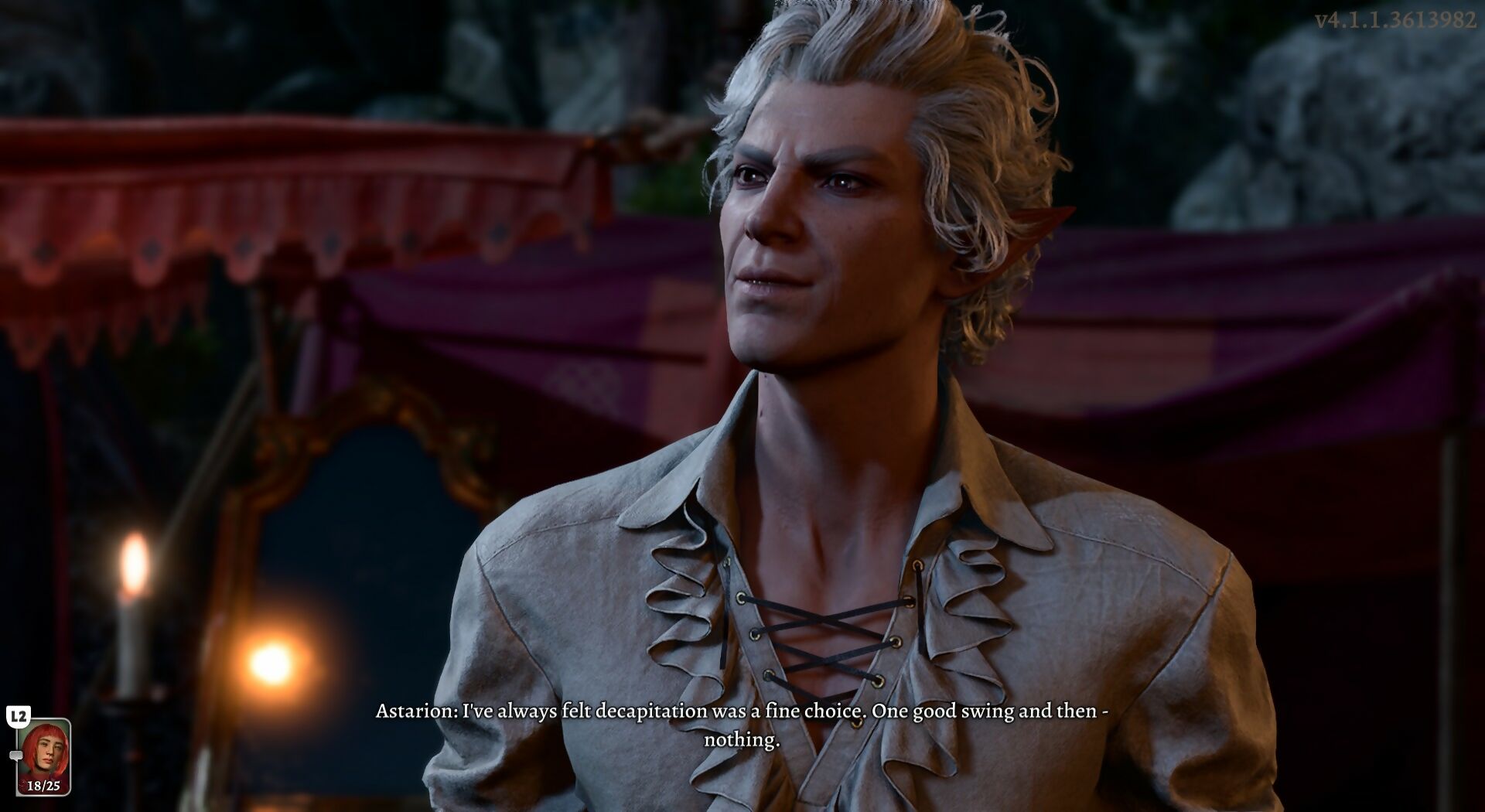
Is ambitious sequel Baldur’s Gate 3 the Rolls Royce of RPGs? As the PlayStation 5 version emerges, here’s Alan Wen’s review.
RPGs owe a huge debt to Dungeons & Dragons, whether it’s in fantasy world-building or player freedom in both narrative choices and how you customise your own character and party stats. But many have largely taken the superficial aspects of the tabletop game to focus on combat, while a shift to console experiences also meant more action-based gameplay with the focus on grinding and loot rather than stories shared with other adventurers.
Baldur’s Gate 3, in the hands of Larian Studios (playing no small part in reviving the CRPG genre with its Divinity: Original Sin series), is an attempt to create the most authentic D&D RPG imaginable. It’s possible to roleplay the campaign with friends locally and online as if you’re sitting around a table IRL. Create your deeply customisable adventurer or play as one of the many richly written preset characters. Go on an epic quest in the Forgotten Realms that also offers unparalleled freedom in how to approach any given situation. Engage with mechanics that faithfully adhere to the tabletop’s fifth edition rules.
All of this is delivered with triple-A production values – and you can even play with a controller (that’s important, given it’s also on PS5, with an Xbox port to follow). That’s ambitious, and a promise to be all things to all players, whether or not they know what a D20 is. But does it succeed?
Baldur’s Gate 3 certainly succeeds in being the prettiest looking entry in the series. This is hardly a surprise given that it has appeared more than 20 years after the second game, with a move from sprites to 3D in Larian’s Divinity 4.0 engine. It’s even possible to move the position of the camera from its classic top down isometric perspective down to ground level behind your character, giving a similar console experience on par with Dragon Age or The Witcher. Those detailed visuals hold up beautifully in closer scrutiny – which is handy, given you’ll likely have spent ages poring over the character creator.
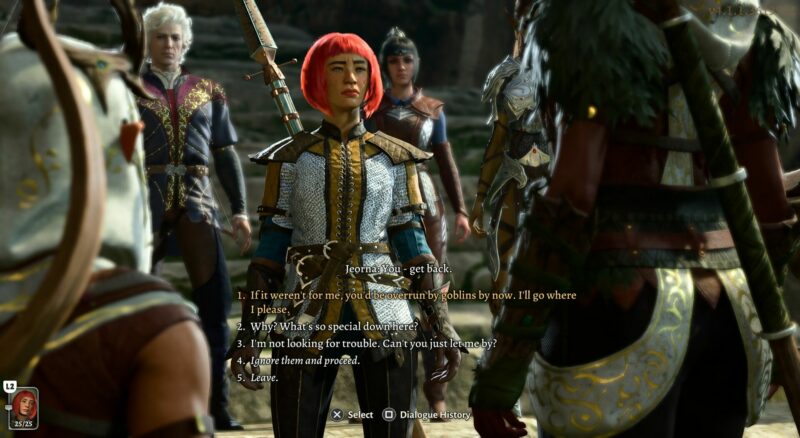
Credit: Larian Studios.
Baldur’s Gate 3 may look like a third-person action game, but it doesn’t quite control like one, and you’ll likely have an easier time using a mouse to interact with specific objects or NPCs than awkwardly angling the camera. Similarly, with a controller, actions like jumping and sneaking aren’t inputs but rather commands you have to select via cycling through action wheels (jump at least has a shortcut on the d-pad).
Like D&D, Baldur’s Gate 3 is about considering your stats and talking your way out of a tight spot through persuasion, deception, or intimidation, but there’s still actually a lot of combat – which is by far my least favourite aspect of the game. Battles are turn-based, where each party member can move a limited distance and also perform (typically) one action as well as a class-based bonus action. The success of most actions are also determined by dice roll calculations based on your character stats and environments, and goodness do they start off very unforgiving, even at the easiest difficulty.
You’ll want to approach a fight carefully or efficiently – but all too often you’re at the mercy of some astonishingly low hit rates. Even the hits themselves might only do paltry damage, considering damage can sometimes range from five to 20. A goblin you thought you could kill in two actions, for instance, may end up taking five, but by that many turns you’ll probably be overwhelmed by his mates. Even if you decide to rush in and take out the strongest leader first, you can still get done in by the stragglers.
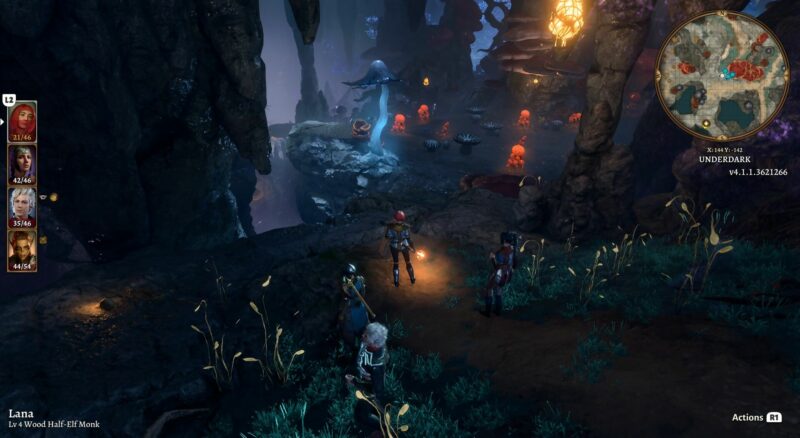
Credit: Larian Studios.
Granted, when you’re starting out at low-level, this is par for the course: you’re supposed to get stronger and unlock better abilities as you level up, which is meaningful since the maximum level is 12 – significantly lower than the maximum in D&D. All the same, even as I carried on playing and had some spells that were great for dealing with mobs or just had my heavy hitter charging in to get the biggest damage on the first turn, I rarely found it fun. For what it’s worth, my character was a half-elf monk who was supposed to do better with multiple strikes unarmed, but I also invested in stats that gave them the gift of the gab to talk their way around a situation, so being able to outsmart an enemy to avoid everyone in the area suddenly wanting to kill me was my favoured approach.
Indeed, my favourite thing about Baldur’s Gate 3 is the act of picking up and then travelling around with a party of completely mismatched personalities, such as half-elf cleric Shadowheart and Githyanki warrior Lae’zel, who are so diametrically opposed they would kill each other in any other circumstances. But bound together as escaped captives from an Illithid ship where you’ve been implanted with a tadpole that will eventually transform you into a tentacled mindflayer, it’s a joy listening to them squabble during your journey through the Forgotten Realms to Baldur’s Gate. And it’s all excellently voiced, with some actors clearly having a ball with the material, including another scene-stealing turn from Maggie Robertson (Resident Evil Village’s Lady Dimitrescu) as the sadistic shape-shifting assassin, Orin.
The first act is full of such wonderful stuff as, just from trying to follow one quest marker, you stumble into one scenario or location after another, acquaint yourself with new people and figure out if you want to work with or against them, help a party member see their own personal quests through, perhaps even ‘fix’ them, or look for the fastest way into their pants.
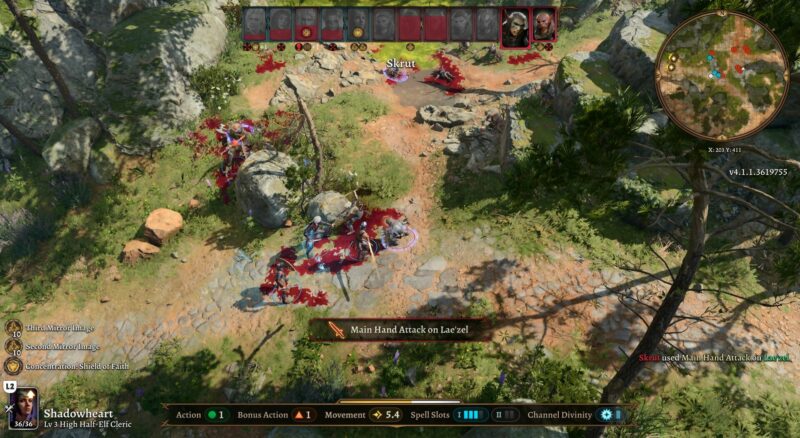
Credit: Larian Studios.
This can only get you so far, though. Because once you eventually find yourself exploring below ground or indeed the Shadow-cursed Lands in Act 2, advancing the story really does mean being forced to fight, and there isn’t really room for error. Even in the first act, some decisions you make as a favour to one party will invariably end up aggravating another group. Such was the case in one early quest where I managed to make a complete hash of a tense situation between some druids and tieflings that resulted in a bloodbath, while going along with a quest that had me kill a character I later realised could have been a vital party member.
In a real D&D session, you naturally take these failures and roll with them as they’re just how your adventure goes. Here you can always save before any such critical decision and then re-load if the outcome isn’t to your favour, and you’d probably want to be manually saving frequently anyway since autosaving appears to kick in fairly infrequently. I find myself in two minds about this: on one hand, with a game offering so much choice, it’s good to be able to see how some decisions play out and then have the chance to re-think, but on the other, it’s very easy to get locked into a save-scumming mentality.
For instance, ability checks where you roll an on-screen D20 to see if you will succeed in what you’re attempting to do can easily be re-loaded until you pass the check, though sometimes you do get bonuses that allow you to re-roll anyway. In the same way, when the odds are so stacked against you in a battle (and there’s a lot of this in the latter half of the game that get frustratingly so), you could also save between every turn and keep re-loading until your party member’s hit lands or the passive checks sway in your favour. Sure, I can eventually succeed by hook or by crook, but I came away feeling unsatisfied by these encounters, at least until I could finally level up and customise my party’s newly unlocked skills or spells.

Credit: Larian Studios.
Ultimately then, it’s Baldur’s Gate 3’s storytelling that just about kept me ploughing on. Yet by the time you get to the rush of the finale, bugs really begin to rear their heads – the most souring of these preventing me from completing a character’s questline despite numerous hotfixes and patches. At the same time, the story narrows down to something less interesting than how it began, and I can’t help but feel deflated by the whole experience. Maybe I just need to re-roll?
Highlight
With the Baldur’s Gate 3 and D&D community hornier on main than most, sex is definitely something of a highlight, though it’s admirable that moments of intimacy aim for more than the heteronormative soft porn aspirations of The Witcher 3. Even if you don’t have a one-track mind, it’s also commendable how well considered the character customisation is that trans, non-binary and gender-nonconforming players can create a character to best comfortably represent themselves.
Verdict: 76%
The ultimate virtual D&D simulator, for better and worse, as its seemingly unparalleled role-playing freedom hangs on dice rolls and frustrating battles.


